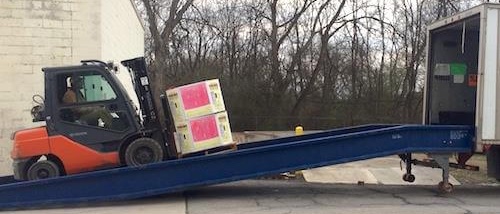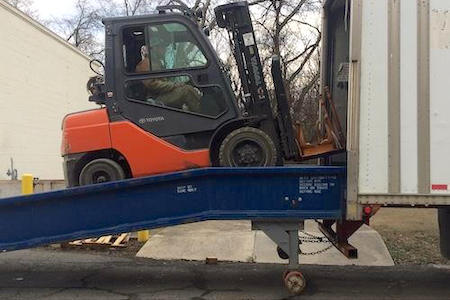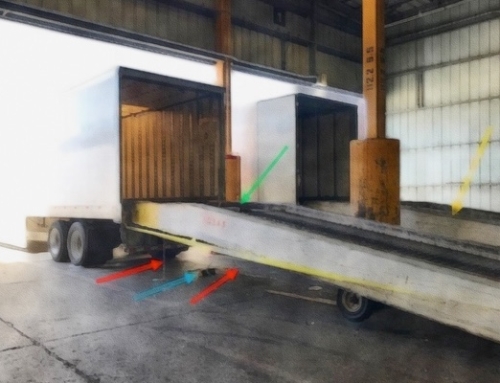OSHA Guidelines Keep You Safe When Operating Forklifts on Ramps
Always follow manufacturer’s guidelines on maximum ramp slopes and weights for both the ramp and the forklift

The Yard Ramp Guy on Forklift Safety
When it comes to operating forklifts moving heavy loads in and around loading bays, the potential for accidents happening is constant. Consider these statistics on accidents attributed to forklifts in 2019:
- 85 deaths per year
- 34,900 resulted in serious injury
- 61,800 resulted in non-serious injury
- 24% of accidents come from overturning forklifts
Operating a forklift on the incline of a ramp causes particular hazards. To promote safety on the job, The Occupational Safety & Health Administration (OSHA) has issued guidelines to prevent accidents. We thought it wise to go over these safety tips as they relate to operating forklifts on ramps, both stationary dock-to-ground ramps and portable loading dock ramps.
These guidelines apply to any ramp or incline with a grade exceeding 10%. Ramp grade is calculated by dividing the height of the loading bay or trailer by the length of the ramp. To get the grade, you then multiply the answer by 100 to get the percentage. (Slope has a different formula and is expressed in degrees.) Most stationary loading bay ramps and portable truck to ground applications fall within a 10-15% grade. Always check with your forklift and ramp manufacturer’s guidelines.
OSHA highlights the increased risk of turnover when moving on a ramp or any kind of incline.

Inclined to Safely Deliver
Their recommendations to avoid accidents:
- Always look in the direction of travel (common sense, right?).
- Never turn a forklift while moving on a ramp—always make the turn prior to entering the ramp.
- Maintain safe distance from edge or side of the ramp.
- Do not travel on slopes that are not in compliance with the manufacturers of both the forklift and the yard ramp.
Safety recommendations when transporting a load:
- The load should always point up the incline, no matter which direction.
- Someone should assist the driver if a load blocks his/her view going up a ramp.
- Always drive forward with forks pointed upgrade.
When moving down a ramp with a load:
- Drive in reverse, turning head and face downgrade.
- Forks pointed upgrade (forks should point down when traveling without load).
Click here for OSHA’s complete guidelines concerning safe operation of forklifts on yard ramps.






